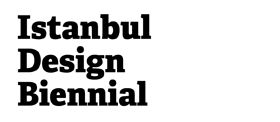
From the pages of NCR-01 comes a text by Kazys Varnelis, co-founder of the New City Reader.
——————-
That two theorists of architecture launched the New City Reader in the fall of 2010 could have been another flight of Glaukus, the Owl of Minerva, who Hegel said spreads her wings at dusk, referring to how philosophy explains a form of life only when that form has grown old. What could possibly be new about a physical newspaper in this day and age? In contrast, “the Last Newspaper,” the show we were commissioned to make the paper for, seemed more in touch with current conditions, its title promising a postmortem.
Still, it was this very transition from print to digital that we hoped to explore by interrogating the materiality of the dying medium of print. Both newspapers and portable networked media devices such as smart phones and tablets are physical objects. But the latter do not reveal anything about their user except perhaps one’s ability to expend disposable income on technology and one’s allegiance to a technology corporation fandom.
Newspapers, in contrast, identify you. Reading one telegraphs the political implications of reading in space. When an adult opens one at the breakfast table, it signifies to children that news is important, something one attends to as a citizen. Reading a newspaper is not reading one’s e-mail for pleasure or profit. It is an engagement with the news, a declaration of interest in public matters. It is hardly an accident that reading has universally been a precondition of the right to vote, and that mass democracy could only take hold after mass literacy. Reading a newspaper in public, or even carrying it in public identifies you as a member of a community, often betraying your political affiliation and even, in the case of papers addressing a diaspora, your ethnicity. Newspapers are not just a public matter, common to all, they are a matter of diverse publics, joined by the common experience of reading the paper, an experience reinforced by the appearance of papers in the public realm. Reading a newspaper in public is a provocation, a call to action, to at least bury one’s nose in a newspaper of one’s own.
In contrast, the means by which we read the news on networked media devices reinforce our niches. Politics is invisible, the experience private. Prompted by the ease of sharing, we post articles onto social media sites, but in doing so we only reinforce the beliefs of those around us, people with whom we have chosen to network.
With the New City Reader, we sought to return to an older practice of reading newspapers, posting them in public and, in so doing, taking advantage of the newspaper as a graphic surface. Posting newspapers on walls was common in New York outside of newspaper offices in the nineteenth century and still exists in many countries which have either government run newspapers and large populations of poor people who cannot afford to purchase newspapers outright. We thought that the sharing that such newspapers created was worth investigating in depth. We set out to to find some two dozen sites in which we could publicly hang the papers. Unfortunately, we found this easier said than done. New York city levels $35,000 in fines for posting materials in public with a permit—and these proved difficult to obtain—and our original plan to post papers on temporary walls around construction sites turned out to risk angering those organized crime entities with connections to the construction industry. Posting in public, it turned out, already had an agenda, one of money and danger. Thus, the first New City Reader inadvertently wound up reinforcing our own niche, being posted in the façades of the New Museum and Storefront for Art and Architecture, as well as on the walls of the Columbia Graduate School of Architecture, Planning, and Preservation, Pratt, and even the School of Architecture at the University of Limerick.
Despite our failure to paper the city with news, we felt that our interrogation of the materiality of the newspaper was a success. We understood newspapers as we never had before and just perhaps, thought that our readers might have learned something new as well.
It is a great delight that Istanbul has become the second city to host the New City Reader. In founding the paper, Joseph and I intended that it would become itinerate and extend its surface across the globe. In doing so, it may be that the New City Reader reminds us that the materiality of newsprint is the overlooked strength of the newspaper. No matter how convenient digital music is, vinyl is experiencing a resurgence as a new generation discovers how much better it sounds than low quality digital formats. Of course contemporary vinyl is pressed much more carefully than in the past when record companies took it for granted. What better, in the face of the challenge from new media, than for newspapers to do the same? Alas, given the moribund nature of most existing publishers, this is unlikely; but perhaps in this the New City Reader is not the last newspaper but the first newspaper, an early salvo in a new era of media in which we no longer take materiality—or for that matter, immateriality—for granted. And perhaps it is for this reason, that ultimately the work was not just a newspaper but a work of architecture.
- Kazys Varnelis









By Tangela
October 28, 2014 10:04 AM
Quality articles or reviews is the main to interest the viewers to visit the
web site, that’s what this web site is providing.